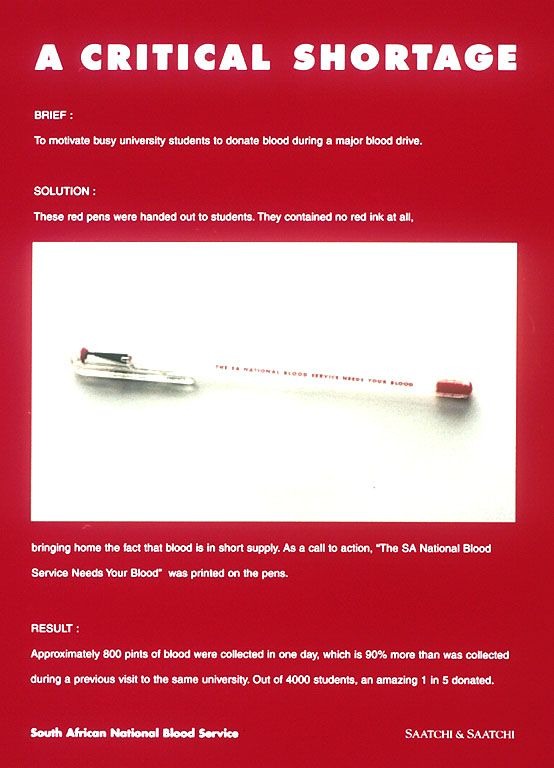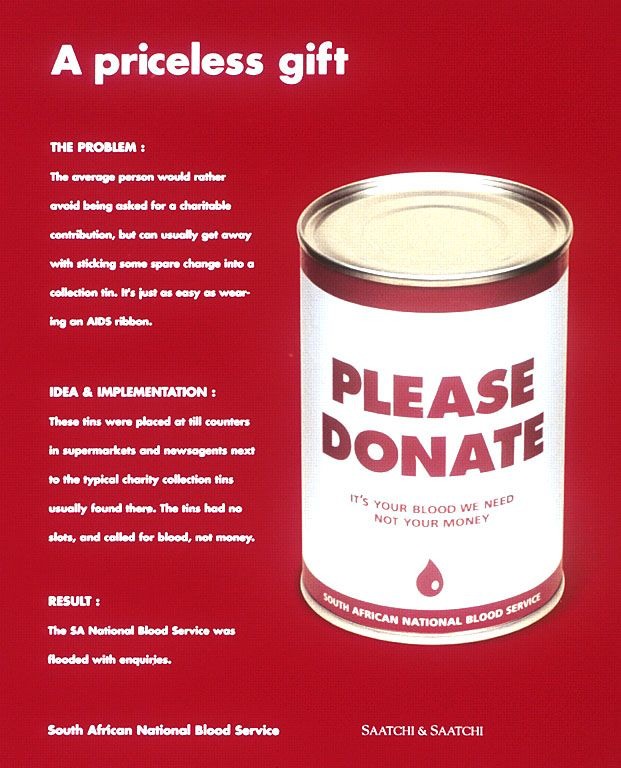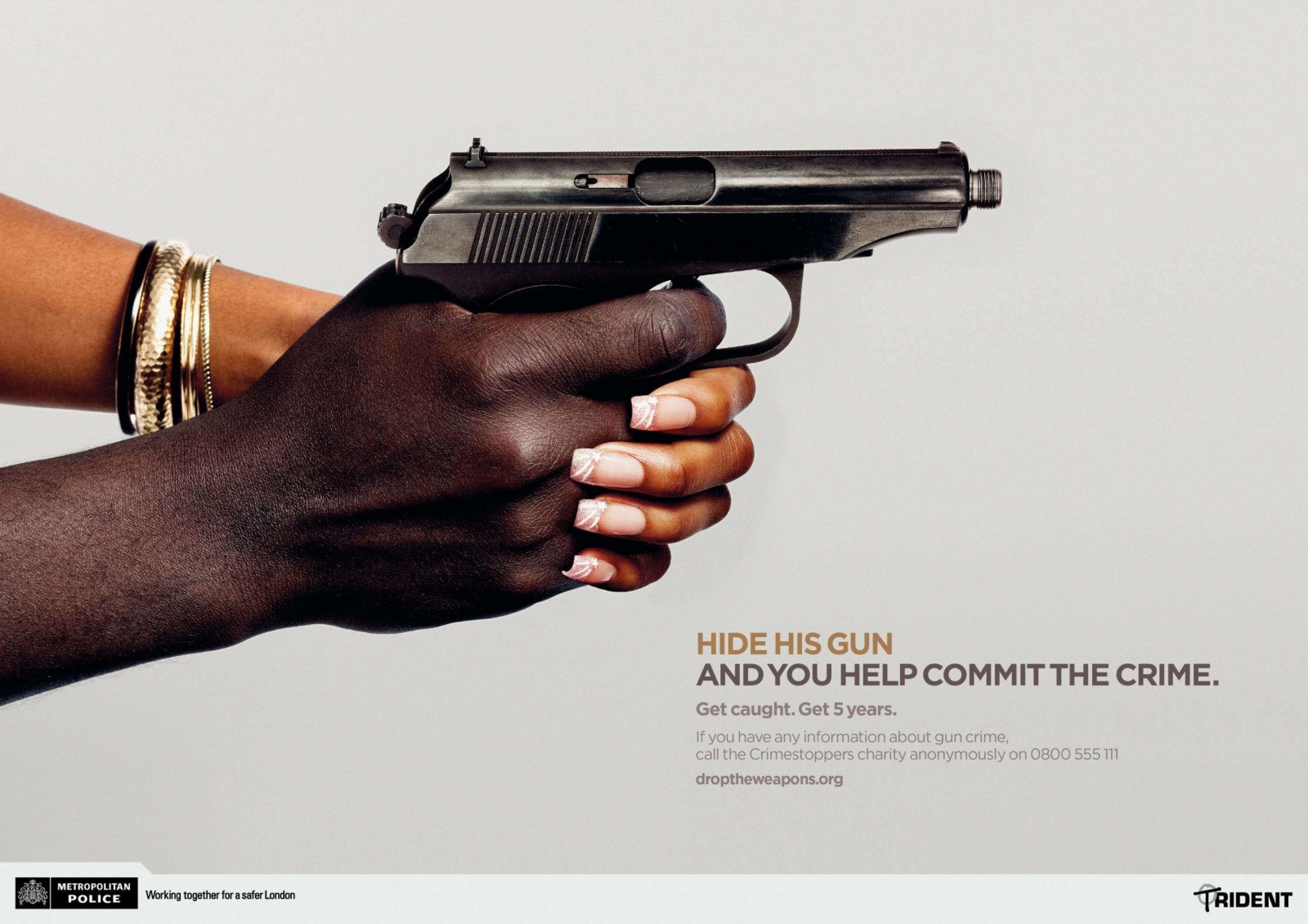Cannes Lions
BLOOD TRANSFUSION SERVICE
SAATCHI & SAATCHI , Johannesburg / SOUTH AFRICAN NATIONAL BLOOD TRANSFUSION SERVICES / 2002
Awards:




Overview
Entries
Credits
OVERVIEW
Description
The main hurdle, when it comes to blood donation, is fear. This fear could be something as simple as the fear of needles, or on a deeper level, the fear of contracting disease by donating blood. However, our collection tin did not aim to deal with this particular issue. Our main communication goal with our tin was merely to motivate ordinary consumers to at least consider giving blood, not to convince them that it is safe to do so. This is a task best left to the staff of the South African National Blood Service, as they are qualified to answer questions and allay fears. For this reason, the tin provided several phone numbers that interested consumer could call, in case they were interested. The key media idea was to use a mechanism (a money collection tin) yet make it impossible to use the mechanism as it is normally used (to collect money). Several hundred tins were distributed in the Gauteng area; they were placed in newsagents, supermarket franchises and 24-hour garage shops. Response was overwhelming, and the SA National Blood Service was flooded with enquiries. Direct Mail is the preferred media choice when it comes to soliciting blood donations. However, the major flaw with this strategy is that it only targets existing donors, i.e. people who have donated before. The challenge was to broaden our targets, and communicate our message to a wider target audience. The media team suggested that we find ways to speak to consumers where they least expect to be spoken to. In other words, not to do TV, radio or print advertisements, which is the expected thing to do, but instead to target them while they’re doing everyday things, like buying a newspaper in the morning, or purchasing milk & bread on the way home from work. Collection tins, by their very nature, always ask for money. The only variable is usually what they’re asking money for. Some of the most common collection tins are those from the SPCA, Child Welfare agencies, Anti-Abuse groups and charities linked to specific diseases. The result is that, in South Africa, you simply cannot visit a newsagent or supermarket without encountering at least three or four of these collection tins at the till counter. They present a good opportunity to be seen to be doing something charitable, even if it only costs you some spare change. One’s gut reaction is usually to just dump whatever small change you want to get rid of into the first and best tin you see, i.e. the fact that you’re giving something, becomes more important than who you’re giving it to. It’s exactly this kind of absentminded “donation” that our tin won’t allow. Because the tin has no slot to put money through, consumers are intrigued to discover why this is the case. The tin then informs them that we need “blood, not money”. To help, they actually have to do something; they can’t make the issue go away with their spare change.
Execution
Direct Mail is the preferred media choice when it comes to soliciting blood donations. However, the major flaw with this strategy is that it only targets existing donors, i.e. people who have donated before. The challenge was to broaden our targets, and communicate our message to a wider target audience. The media team suggested that we find ways to speak to consumers where they least expect to be spoken to. In other words, not to do TV, radio or print advertisements, which is the expected thing to do, but instead to target them while they’re doing everyday things, like buying a newspaper in the morning, or purchasing milk & bread on the way home from work.




